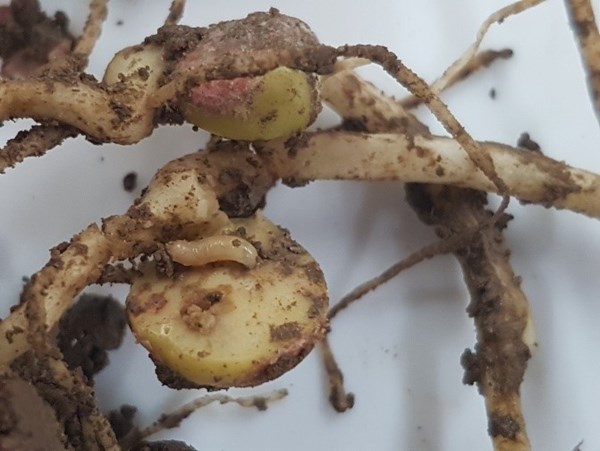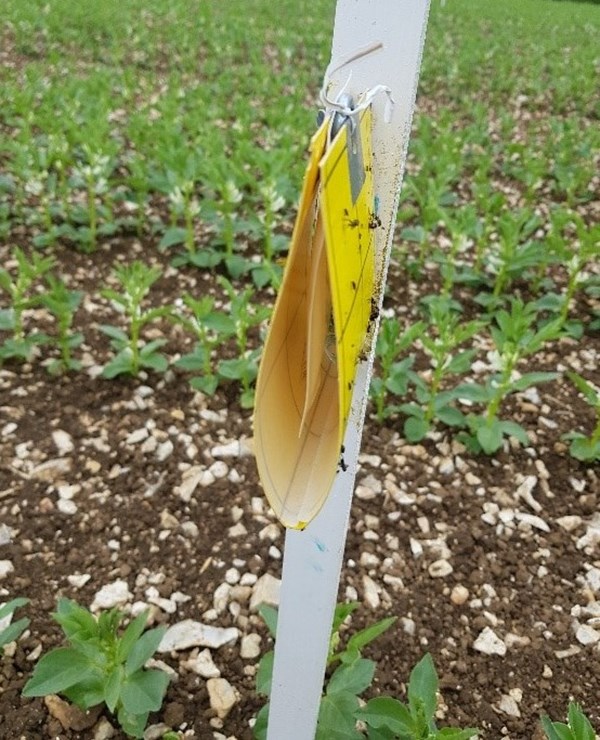Please click here to access the main AHDB website and other sectors.
- Home
- Projects
- Farm Excellence
- Strategic Centre for Field Vegetables - Peas and Beans
Strategic Centre for Field Vegetables - Peas and Beans
About Strategic Centre for Field Vegetables - Peas and Beans
- The Strategic Centres for Field Vegetables showcased research and technology that was carried out to improve integrated pest management (IPM) strategies.
- There were demonstration sites around the UK, which focused on four key crops; carrots, peas, onions and brassicas.
- The Strategic Centres for Field Vegetables built on the success of AHDB’s variety trial programme, by expanding to incorporate grower-led research trials.
The main pea trials took place with PGRO in Fosdyke Bridge, Lincolnshire. However, other smaller trials took place in Yorkshire and in other locations in Lincolnshire.
Work Programme and results for the 2019/20 season
In 2019/20 the Strategic Centre for variety trials and bean seed fly field trials conducted by PGRO.
The Legume Industry Panel has identified varietal selection as an important and key element of crop production and requires an accurate guide to the performance of varieties in areas typical of pea production. Priorities also included the development of novel products to help mitigate the effects of continued loss of active substances to manage key pests and diseases.
For the full report on each work area, go to the Strategic Centre for Field Vegetables project page.
Variety evaluation
Varietal selection is an important and key element of vining pea crop production to ensure a programmed harvest period and to maintain high quality produce. Vining peas are grown commercially in strict schedules from drilling to harvest and selection of variety is critically important to allow growers and processors to manage programs effectively. This enables a high degree of harvest and processing planning and the spread of workload both in the field and in the processing factories. Any disruption to factory process leads to large additional costs or losses. The period of harvesting and processing is from mid-June to the end of August in the UK, and varies depending on regional differences in environmental conditions.
In practice, commercial programmes are based on the use of a minimum of four varieties and it is more likely that six or seven will be used to give a spread of maturity and to allow production for special markets.
Despite the weather conditions in the 2020 growing season, the yield standard Oasis yielded well, 9.05t/ha at TR105, with a moderate increase to 10.55t/ha at TR125. Oasis, a vigorous leafy variety often performs well in these conditions and less well in fertile wetter conditions. In the wetter 2019 season some varieties out-performed Oasis, but in the difficult 2020 season many varieties were lower yielding by comparison. Yields and maturity for Avola are based on a single harvest at around TR105. Consequently no maturity comparisons can be made against Avola at TR125.
- Cooler and wetter conditions part way through the harvest gave rise to extended maturity for the later maturing varieties, with Oasis maturing 16 days later than Avola
- Top yielding variety was Oasis. Ida (98 and 91%) was a little lower yielding than Oasis
- Overall Boogie (100/103%), Ida (100/102%) and Dancer (102/97%) were the higher yielding varieties over the 2 years
- Late maturing Kimberly, yielded (80 and 85%) better in 2020, when compared to Oasis
- Many other varieties showed similar yield rankings in 2020 to 2019 when compared to Oasis
- As in 2019 Artemia and Selune gave a very low pea:vine ratio (8% and 10% respectively) compared to Oasis (23%)
- Avola and Boogie gave produce with very large size grade peas. Artemia and Selune gave much smaller produce, Artemia small-very small size grade and Selune very small-small size grade
- Many varieties showed no blond peas in the defrosted samples. Oasis showed the most
- Brix levels were generally higher than in 2019. As in 2019 Artemia gave the highest Brix score (16.2%)
- The only variety to have lodged significantly was Oasis with a rating of 2
- Dancer, Ebba and Idalgo had the better downy mildew resistance, showing moderate field resistance
Establishment difficulties led to some missing data for some varieties.
Bean seed fly
Bean seed flies (Delia platura and Delia florilega) are small flies which are closely related to the cabbage root fly and onion fly. The larvae feed on a wide range of crops, affecting more than 40 different host plants, which they usually attack during germination, reducing emergence and therefore causing serious economic losses. Host plants include bean, onion, cucurbits, spinach, brassicas, radish, beet, asparagus, sweetcorn, cereals and clover. They can occur as secondary pests and have a wide geographic distribution.
Furthermore, due to the loss of plant protection products, bean seed fly is becoming increasingly difficult for growers to control. It was for this reason that growers decided to prioritise bean seed fly for Strategic Centre grower led activities.
Cultivation trial
A survey of pea crops carried out in 2019 by PGRO, Swaythorpe Growers and Stemgold Peas indicated that the period between spring cultivation and drilling peas was an important factor affecting damage to plants by bean seed fly larvae, with a period of around 14 days leading to reduced damage levels compared to cultivations taking place at the same time as drilling. This finding is supported by literature that cites conservation tillage and reduced cultivations to help manage damage to crops by bean seed fly larvae.
This trial aimed to determine whether cultivation timing may be used as a cultural method to help manage damage to crops by bean seed fly larvae, and the minimum period between cultivation and drilling to lead to optimum reduction of damage.
Take home message:
A period of at least seven days between cultivation and drilling vining peas helped reduce damage to vining peas from bean seed fly larvae. At earlier crop growth stages, damage was reduced from 19.87% to 1.06% by leaving a period of 21 days, saving approximately £350 per hectare in potential losses.
See full report and article for further details.



